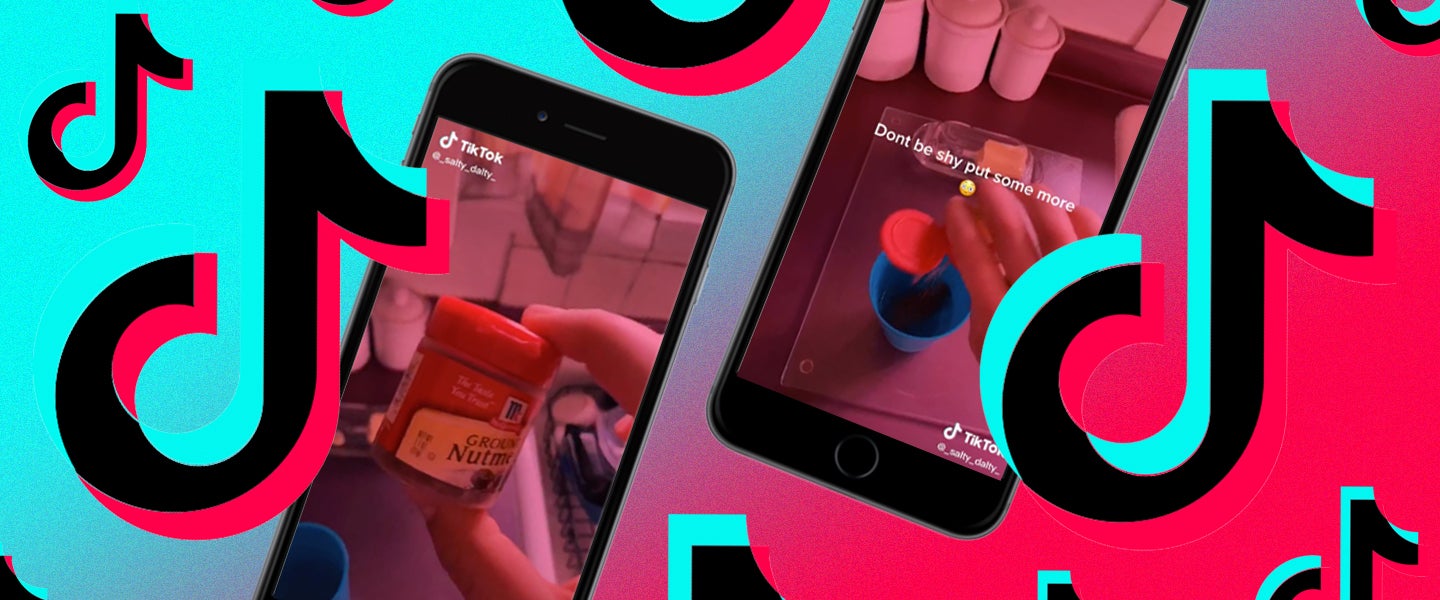As the coronavirus quarantines drag on, teens, stuck at home and bored out of their minds, have come up with a fascinating way to pass the time: Get high on nauseating amounts of nutmeg and document the outcome on TikTok for the world to dig up and scoff at when they eventually run for president or whatever. (Which, uh, can nutmeg make you high, even?)
On the internet, the curious spice-driven movement has come to be known as the “nutmeg challenge,” but people have been getting high — or at least attempting to get high — on this festive seed since long before TikTok existed. “The ingredient in nutmeg that’s psychoactive is myristicin, which is similar in its effects to mescaline, the active ingredient in the hallucinogen peyote,” explains Wes Boyd, associate professor of psychiatry at Harvard Medical School and author of Almost Addicted. “The first time I’d heard about being able to get high on nutmeg was when I first read The Autobiography of Malcolm X in college. Malcolm X said that when he was in prison, he’d use nutmeg to get high. So for many, nutmeg is psychoactive and can cause hallucinations and euphoria, but the side effects can include nausea, vomiting, racing heart, anxiety and high blood pressure, and are generally unpleasant for nutmeg users.”
According to the American Association for Clinical Chemistry, anywhere between one and four teaspoons of ground nutmeg can make you feel intoxicated — for reference, the average pie recipe calls for anywhere between a quarter and an eighth of only one teaspoon.
In other words, if you want to get high, slamming nutmeg is a pretty shit way to do so. In fact, many TikTok users posting about their experience with the spice outright lament about the crummy, mostly undesirable high, grumbling about nausea, headaches and occasionally seeing bizarre hallucinations of what they claim to be mysterious elven figures.
Awful high or otherwise, teens are still drawn to altering their reality, especially through viral challenges like this one. “There are several elements that make these online challenges enticing to participate in,” Boyd says. “First, whether quarantining because of COVID-19 or not, we’re inherently social beings, and we want to participate and belong. Also, I assume that many of the videos show people laughing and having fun, without highlighting any negative effects, so that, at first blush, taking the challenge — no matter the specific challenge — is something that seems enjoyable.”
Furthermore, teens are just, well, kind of crazy (which, on a side note, could explain why My Chemical Romance frontman Gerard Way famously sang, “Teenagers scare the living shit out of me”). As Mark Griffiths, professor of behavioral addiction and director of the International Gaming Research Unit at Nottingham Trent University, explains, “I’ve spent my whole career researching why adolescents engage in risky behaviors, such as gambling, and if you ask teenagers to explain their behavior, there are a consistent set of reasons given, such as engaging in the activity because (1) it’s fun, exciting, mood-enhancing and/or dangerous; (2) others around them do it (friends, relatives); (3) they have a low boredom threshold; (4) it’s an act of rebellion against parents and other ‘authority’ adults; and (5) it may change others’ views on how they’re perceived, with the person engaging in the act hoping they’ll be viewed more positively by their peers.”
Or in the case of the nutmeg challenge, maybe teens have simply decided that feeling like shit is better than feeling nothing at all as the world crumbles under the crippling weight of the coronavirus.
“To me,” Griffiths continues, “the nutmeg challenge is akin to other challenges usually taken on by youth in an attempt to impress their friends. For instance, there are thousands of YouTube videos with young people taking the ‘Cinnamon Challenge,’ where a tablespoon of cinnamon is put into someone’s mouth, and the challenge is to swallow all of it within a 60-second period without drinking any water. It’s virtually impossible to do — it burns, it makes you cough and you’ll most probably regret having tried it in the first place — but it hasn’t stopped people from trying.”
Nutmeg being so easily accessible also contributes to this challenge being especially popular, since, as we all know, most teenagers will attempt to get high on just about anything they can. “With nutmeg in particular, part of the drive is that nutmeg is perfectly legal, and it’s novel for something to be both legal and able to get you high,” Boyd says. “Additionally, nutmeg is perceived as an inexpensive way to get high. Consuming nutmeg for the purpose of getting high is therefore breaking the rules — because we all know that we’re not supposed to get high — without actually breaking any rules. Also, I assume it’s mostly kids and young adults who are engaging in this particular challenge, and those individuals, developmentally, are prone to thrill seeking and stimulation, but also frequently don’t seriously consider the possible ill effects or dangers of their choices.”
There are both ill effects and dangers that come with consuming so much nutmeg, ranging from, as I already explained, feeling like complete shit to, in rare instances, requiring hospitalization. As one study on nutmeg intoxication explains, “Nutmeg poisoning is rare but probably underreported and should be considered in recreational substance users with acute psychotic symptoms as well as central nervous system neuromodulatory signs that may mimic in part an anticholinergic hyperstimulation.” Or as another case study reports, one 13-year-old developed “bizarre behavior and visual, auditory and tactile hallucinations,” along with nausea, blurred vision, numbness and muscle weakness after ingesting roughly four teaspoons of nutmeg and smoking some dank weed.
So yeah, when you consider the crappy side effects and just as crappy payoff that comes with getting high on nutmeg, really, making a pie or something is a much, much better alternative — and I say that as someone who really, really likes to get high.

